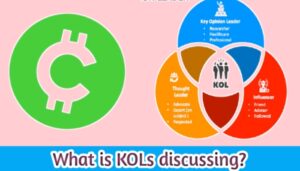Monetary policy is one of the most important tools used by governments and central banks to regulate a country’s economic health. In simple terms, it involves managing the supply of money and credit in the economy to achieve specific objectives such as controlling inflation, stimulating growth, or maintaining currency stability.
The importance of monetary policy lies in its ability to balance the delicate equilibrium between growth and stability. A well-implemented monetary policy ensures that the economy grows steadily without causing uncontrolled inflation or deflation.
1. Types of Monetary Policy
Monetary policy can be broadly classified into three types:
1.1 Expansionary Monetary Policy
This policy is adopted to stimulate economic growth during a slowdown or recession. The central bank increases the money supply and reduces interest rates to encourage borrowing and investment.
Measures:
- Lowering the repo rate (rate at which banks borrow from the central bank)
- Reducing Cash Reserve Ratio (CRR) and Statutory Liquidity Ratio (SLR)
- Purchasing government securities through Open Market Operations (OMO)
1.2 Contractionary Monetary Policy
This policy is used to control inflation when the economy is overheating. By reducing the money supply and increasing interest rates, spending and investment are curtailed.
Key Measures:
- Increasing the repo rate
- Raising CRR and SLR
- Selling government securities to absorb excess liquidity
1.3 Neutral or Moderate Monetary Policy
A neutral policy is aimed at maintaining economic stability without overly stimulating or contracting the economy. It balances inflation control with growth promotion.
2. Monetary Policy Tools
Monetary policy is implemented through a range of quantitative and qualitative tools. These tools enable the central bank to regulate liquidity, credit, and interest rates effectively.
2.1 Quantitative Tools
These tools focus on controlling the overall supply of money in the economy.
| Tool | Description | Impact on Economy |
|---|---|---|
| Cash Reserve Ratio (CRR) | Percentage of deposits banks must keep with the central bank | Higher CRR reduces money supply; lower CRR increases liquidity |
| Statutory Liquidity Ratio (SLR) | Minimum reserves banks must maintain in liquid assets like bonds | Controls credit flow for investment and lending |
| Repo Rate | Rate at which banks borrow from the central bank | Lower rate encourages borrowing; higher rate restricts credit |
| Reverse Repo Rate | Rate at which banks deposit excess funds with the central bank | Higher rate absorbs liquidity; lower rate encourages lending |
| Open Market Operations (OMO) | Buying/selling government securities to adjust money supply | Buying securities increases liquidity; selling absorbs excess funds |
2.2 Qualitative Tools
Qualitative tools regulate credit distribution to specific sectors of the economy.
| Tool | Description | Purpose |
|---|---|---|
| Credit Rationing | Limiting loans for certain sectors | Directs funds to priority sectors like agriculture or infrastructure |
| Margin Requirements | Minimum equity to be maintained for loans against securities | Controls speculative lending and investment |
| Consumer Credit Regulation | Restricting or promoting credit for consumption | Influences spending behavior and inflation |
3. Implementation Mechanism
The success of monetary policy largely depends on how effectively it is implemented.
3.1 Role of the Central Bank
The central bank (e.g., RBI in India, Federal Reserve in the USA) is the primary authority responsible for implementing monetary policy. Its functions include:
- Controlling money supply and credit
- Setting interest rates
- Managing foreign reserves
- Monitoring banking and financial institutions
3.2 Coordination with Government Policies
Monetary policy works best when coordinated with fiscal policy, which deals with taxation and government spending. A combined approach ensures balanced economic growth.
3.3 Transmission Mechanism
The transmission mechanism explains how policy decisions affect the economy. It includes:
- Interest Rate Channel: Changes in policy rates influence borrowing and lending.
- Credit Channel: Policies impact the availability of loans for businesses and individuals.
- Asset Price Channel: Influence on stock, bond, and real estate prices affects wealth and consumption.
- Exchange Rate Channel: Policy adjustments affect currency value and international trade.
4. Monetary Policy Framework
A modern monetary policy framework focuses on systematic and transparent implementation.
4.1 Inflation Targeting
Central banks set specific inflation targets (e.g., 4% ±2% in India) to maintain price stability.
4.2 Money Supply Management
Monitoring the growth of M1, M2, and M3 money aggregates helps in controlling liquidity in the economy.
| Money Supply | Components | Purpose |
|---|---|---|
| M1 | Currency with the public + demand deposits | Immediate liquidity measure |
| M2 | M1 + savings deposits | Broader liquidity and savings trend |
| M3 | M2 + time deposits | Total money supply, long-term policy planning |
4.3 Interest Rate Policy
Adjusting repo, reverse repo, and bank lending rates ensures effective control over borrowing and lending.
5. Channels of Monetary Policy Transmission
Understanding the transmission channels is key to predicting policy effectiveness.
- Interest Rate Channel:
- Lower rates encourage borrowing and spending; higher rates reduce credit demand.
- Credit Channel:
- Policies determine loan availability for businesses and households.
- Asset Price Channel:
- Monetary policy influences equity and real estate prices, affecting consumption and investment.
- Exchange Rate Channel:
- Policy rates affect currency value, imports, exports, and overall trade balance.
6. Monetary Policy in Practice
Implementing monetary policy involves careful planning and monitoring.
6.1 Policy Formulation Process
- Analyzing economic indicators (GDP growth, inflation, unemployment)
- Reviewing international economic conditions
- Setting short-term and long-term objectives
6.2 Policy Announcement and Communication
- Central banks issue monetary policy statements explaining decisions and rationale.
- Transparent communication improves market confidence and policy effectiveness.
6.3 Monitoring and Adjustment
- Regular review of economic performance
- Adjusting tools like CRR, repo rate, and OMOs based on changing conditions
7. Challenges in Implementation
While monetary policy is powerful, it faces several practical challenges:
| Challenge | Description |
|---|---|
| Time Lags | Monetary policy effects take months to appear in the real economy |
| Market Expectations | Public and investor expectations can reduce effectiveness |
| External Shocks | Global events like oil price shocks, geopolitical risks, or currency fluctuations |
| Structural Issues | Weak banking infrastructure or financial exclusion limits policy impact |
8. Case Studies / Examples
8.1 Successful Implementation Example
- India’s Inflation Targeting (2016 onwards): RBI implemented structured policy rates to maintain inflation within 4% ±2%. Result: Stabilized inflation while supporting economic growth.
8.2 Lessons from Past Failures
- Hyperinflation in Zimbabwe (2000s): Excessive money printing without proper control led to economic collapse. Lesson: Monetary discipline is crucial.
9. Conclusion
Monetary policy implementation is a complex but essential tool for economic management. It requires careful use of quantitative and qualitative tools, effective communication, and constant monitoring.

















